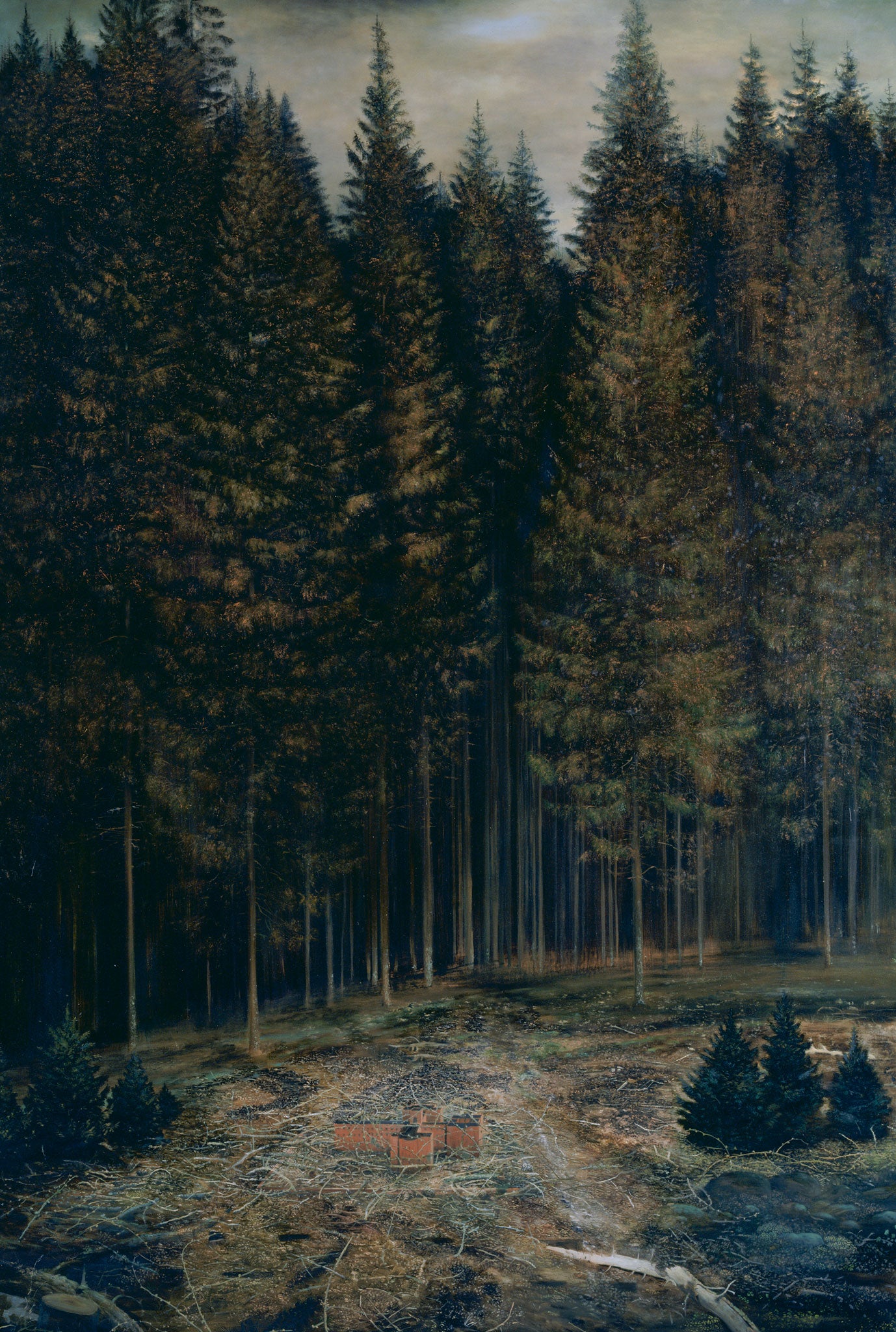Great works: Cross in the Wilderness (2003-4) by Ged Quinn
Tate, London

Occasionally a contemporary painter will indulge in weirdly anachronistic and utterly engrossing plays of historical association. When we try to date this forested scene on our pulses, our first instinct is to say: German Romanticism at the turn of the 19th century; the lonely, soulful woods, mountainscapes and skyscapes of Caspar David Friedrich, for example, which were often inhabited by self-absorbed beings. Except that there is no human being here, and this painting was made just a decade ago.
Had it been created in an earlier century, it would scarcely have been regarded as a legitimate pictorial enterprise at all because at first glance it seems to have almost no theme. It consists of little other than this extraordinarily tall screen of forest, so dense that we have no hope of seeing through it to a less oppressive scene. We want the scene to rise and fall – that would give us pleasure – but it does not do so. It comes on at us, relentlessly foreboding; in fact, it almost presses against our eyeballs. No, nothing is stirring here.
The proportions of the work rather unnerve us too, the sheer tallness of the trees, their blockish unassailability. Had the painting been a little wider, and a little less tall, we might not have suffered such tremors of apprehension. But it is these sinister games of scale that disturb us most of all. What is this architectural structure that is partially concealing itself amid all these fragments of lopped tree limbs? Why is it so small, and why, by comparison, do these anorexically thin trees soar so high behind it? Surely both cannot be true. Their respective scales are utterly at odds with each other.
And then there is that strange structure itself, part felled signpost in a wood, part perverse rendering of a thickened out cruciform shape, with the strewings of branches and twigs posing as some kind of ghostly reminder of Christ's crown of thorns.
This is in fact a miniaturised version of Dachau concentration camp. An ever-burgeoning seedling of pure evil, then.
About the artist: Ged Quinn
Ged Quinn, painter and sometime musician, was born in Liverpool in 1963, though his training as a painter was Europe-wide. He studied at the Ruskin School of Drawing in Oxford, the Slade, London, the Kunstakademie in Dusseldorf and the Rijksakademie in Amsterdam. He now lives and works in Cornwall with his partner and four children. He played keyboards in the Liverpudlian band, the Wild Swans, and co-wrote The Lotus Eaters' hit single, "The First Picture of You".
Subscribe to Independent Premium to bookmark this article
Want to bookmark your favourite articles and stories to read or reference later? Start your Independent Premium subscription today.

Join our commenting forum
Join thought-provoking conversations, follow other Independent readers and see their replies